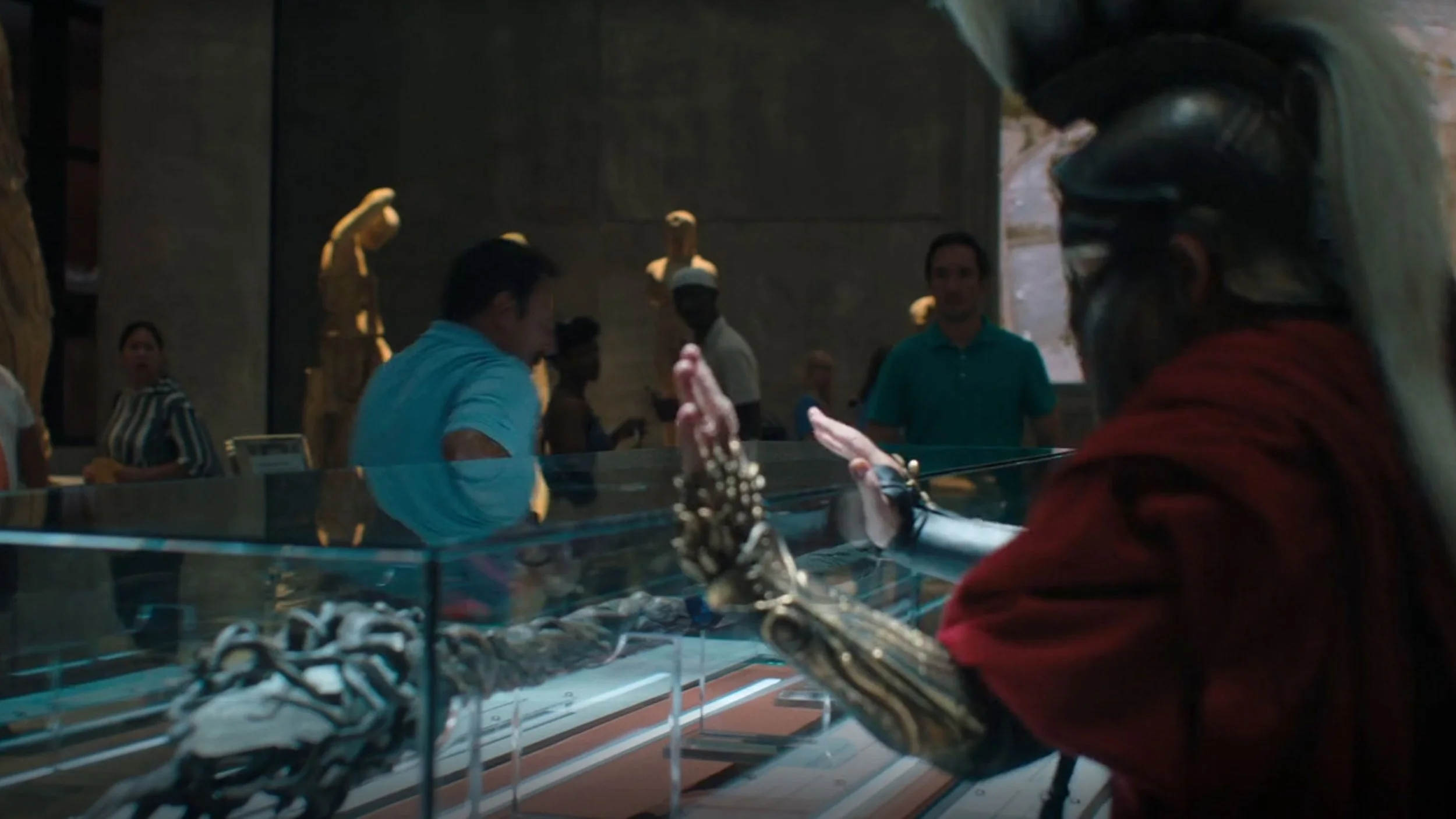Shazam 2
Shazam! Fury of the Gods
The film’s VFX Supervisor, Bruce Jones, and Cinematographer Gyula Pado, enlisted Lux to provide LED services for two large sequences, which were filmed at Atlanta Metro Studios.
Sequence 1
The opening scene of the film, a fight sequence inside a museum, in Greece, with the Acropolis on the horizon.
The set design involved glass-encased artifacts, marble flooring, armor, etc. all of which pick up reflections, which would have been complex and expensive to clean up in post-production if a green screen had been used as the background. The museum segment benefited immensely from a virtual production solution, providing creative freedom with lighting and production design.
By employing virtual production technology, the production eliminated the need to fly the cast and crew to Greece for the shoot. It was not beholden to the weather conditions to provide a perfect sunset or clear, starry night sky. Instead, that magic hour could be called upon over and over until the director was happy with the shot, letting production focus on achieving the director's vision instead of going up against the clock to get the shot before the natural light was lost.
“We used a 2.5D approach with layered images each with their own Z depth to give the backdrop a sense of motion as we tracked the camera,” said Wyatt Bartel, Lux’s vp of production. “We added additional elements like flying birds and rustling trees in the wind to help give it life. Combined with the natural beauty of the forever sunset casting light into the museum and its glossy surfaces, it was a wonderful outcome.”
Sequence 2
The process began in pre-production when a photographer was sent to a school rooftop in Philadelphia to capture plates, which were then split into different layers for Lux’s 2.5D virtual production approach.
“Instead of having a large team of 3D artists working for 6-12 weeks to create a full 3D environment, this was a team of two or three working for two or three weeks to achieve the right look for the backdrop,” explained Bartel. “Lux took complex visual effect shots and turned them into medium or easy shots.”
Shooting on an LED Wall with camera tracking technology meant the Philadelphia background came to life and was photo-real at the same time. Bartel said that besides some clean-up on the wire rigging, “you could skip going to post entirely on almost every insert shot, as well as some mediums. When we went wide we knew we could either match move and extend, or do a full replacement.”
For actors, working in this medium creates a much more meaningful experience. After all, seeing is believing, and with virtual production technology, actors no longer have to ask questions like, ‘Where is my eyeline?’ ‘Which location is this set supposed to be in?’ ‘How big is the vista that I am looking at over the roof?’ Knowing on set what world they are in, is very helpful to their process.
“Bringing these visual elements of the story onto set via virtual production helps make a more cohesive story,” pointed out Bartel. “Principal photography is the only period where the entire creative team is together. The more of the story we can capture together on set as a team, the more able we are to find those special moments of discovery when the camera is rolling.”
Using a virtual production set as a focal point for everybody drives home and unifies the experience for all the different creatives. Once the camera cuts, dailies can be created sooner, and will be better looking; test screenings can be scheduled faster and with less post vis.
“There is less ambiguity in post-production overall because the original intent of the creative production team is embedded into the frame itself,” noted Bartel.
In the end, the filmmakers behind Shazam were able to leverage virtual production technology for complex scenes and deliver a better experience for everyone on set and a beautiful result for those in the movie theaters.
“These two sequences illustrate how easy it is to shoot a complex scene in virtual production if you approach it from a pragmatic and simple perspective,” said Bartel. “Working with Lux, a filmmaker can say, ‘let’s cherry pick this technology, with this screen type, with this content’ and bring it all together into something cost-effective for production while still bringing the on-set experience to life.”




